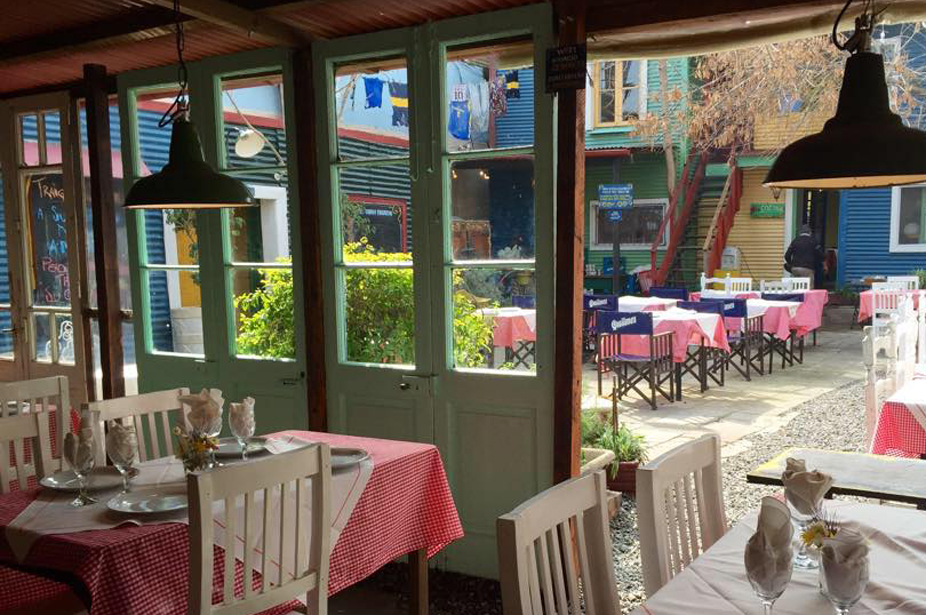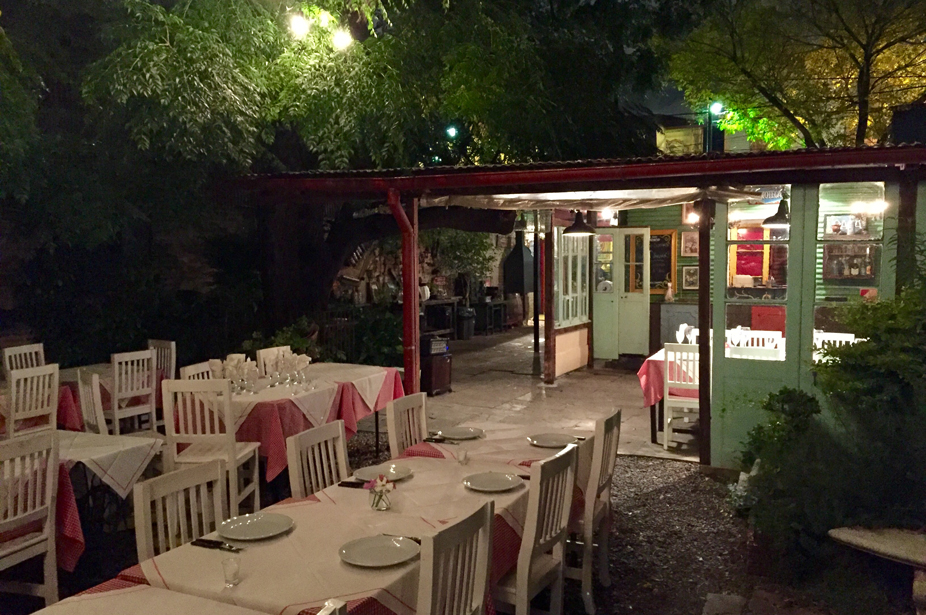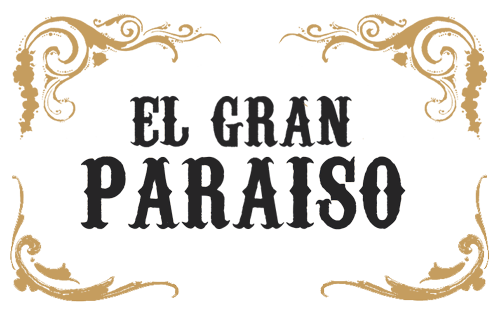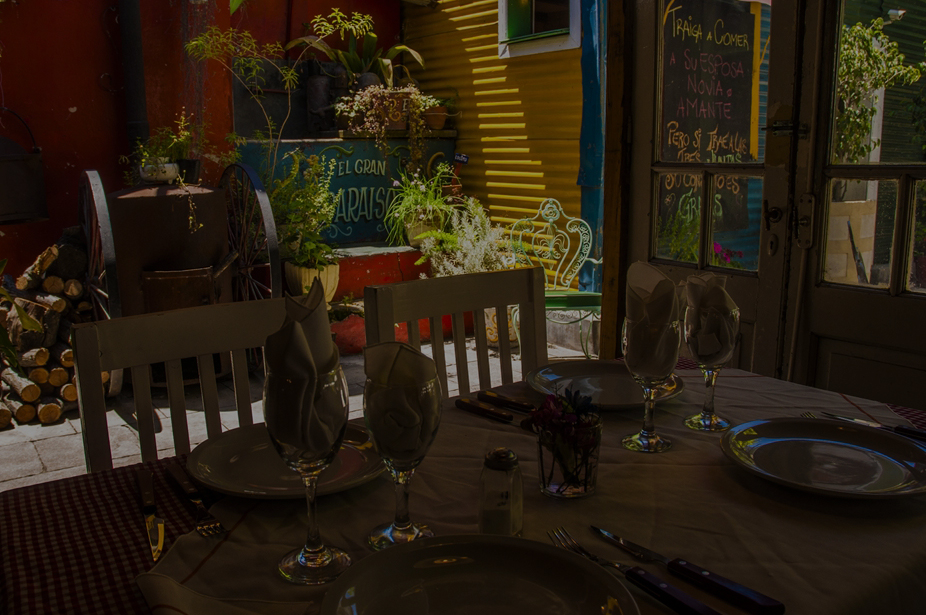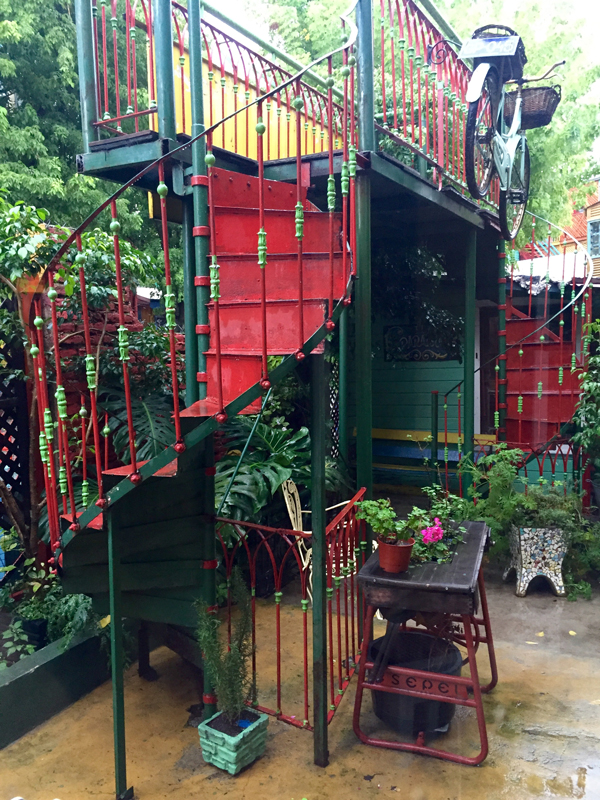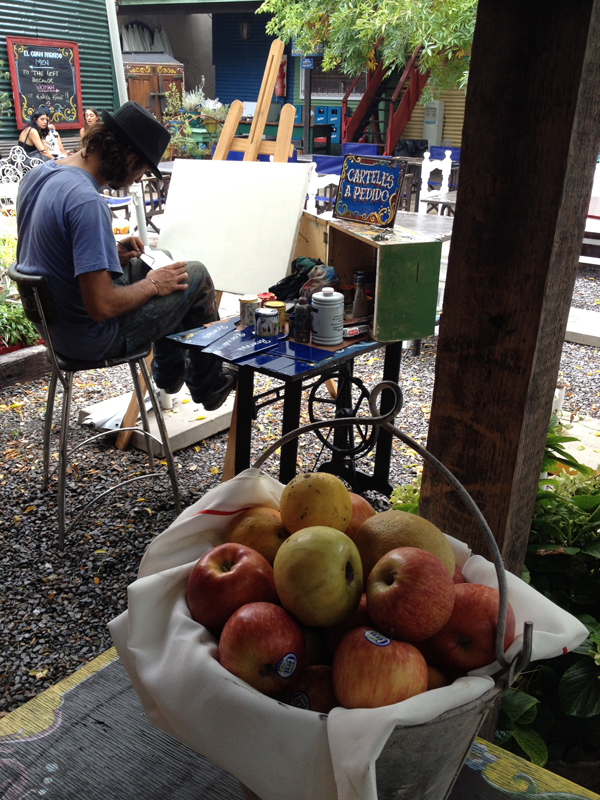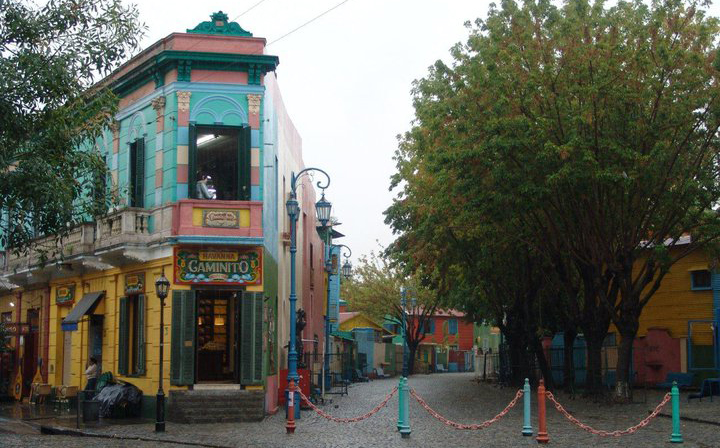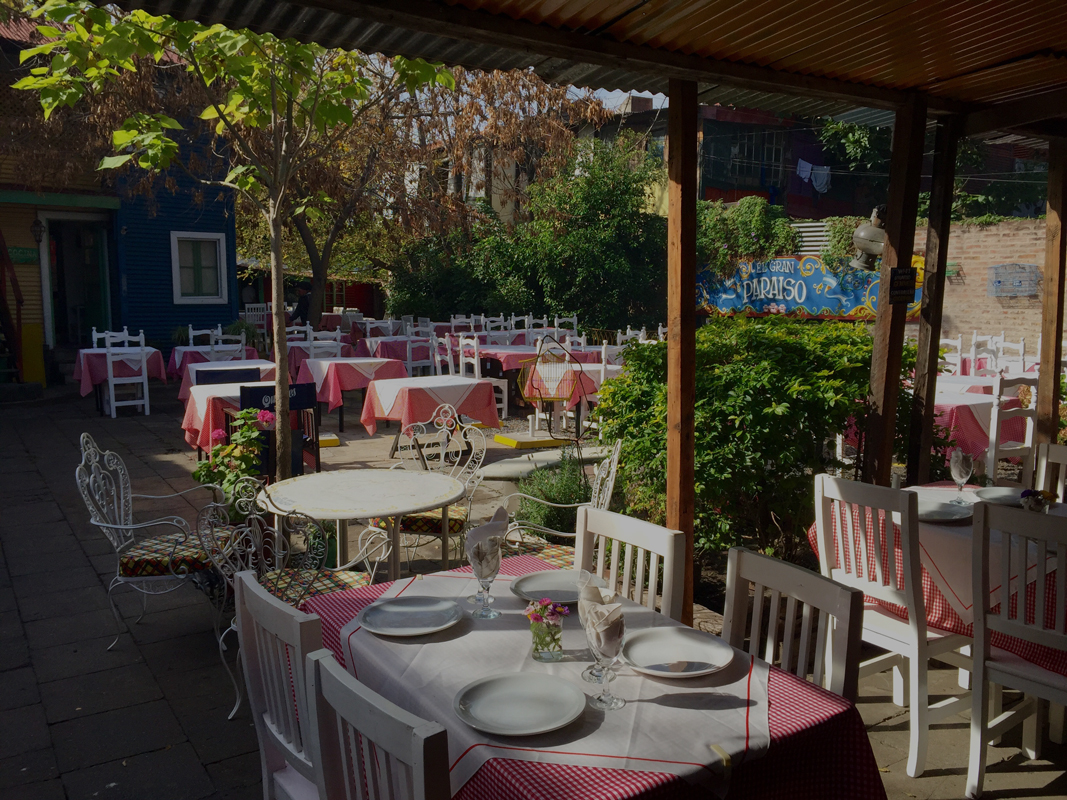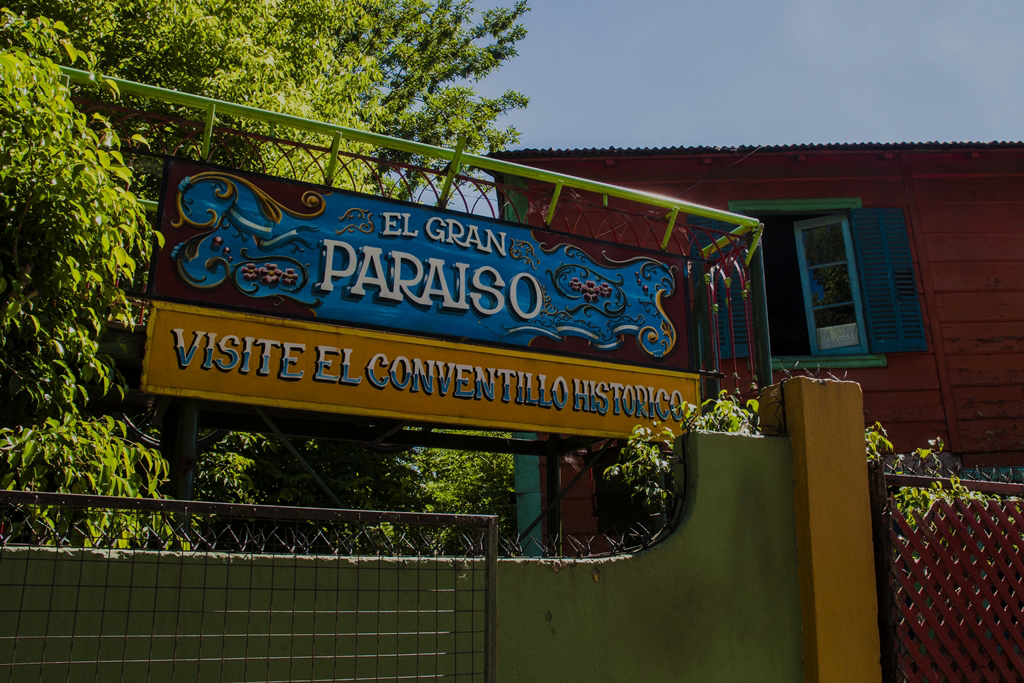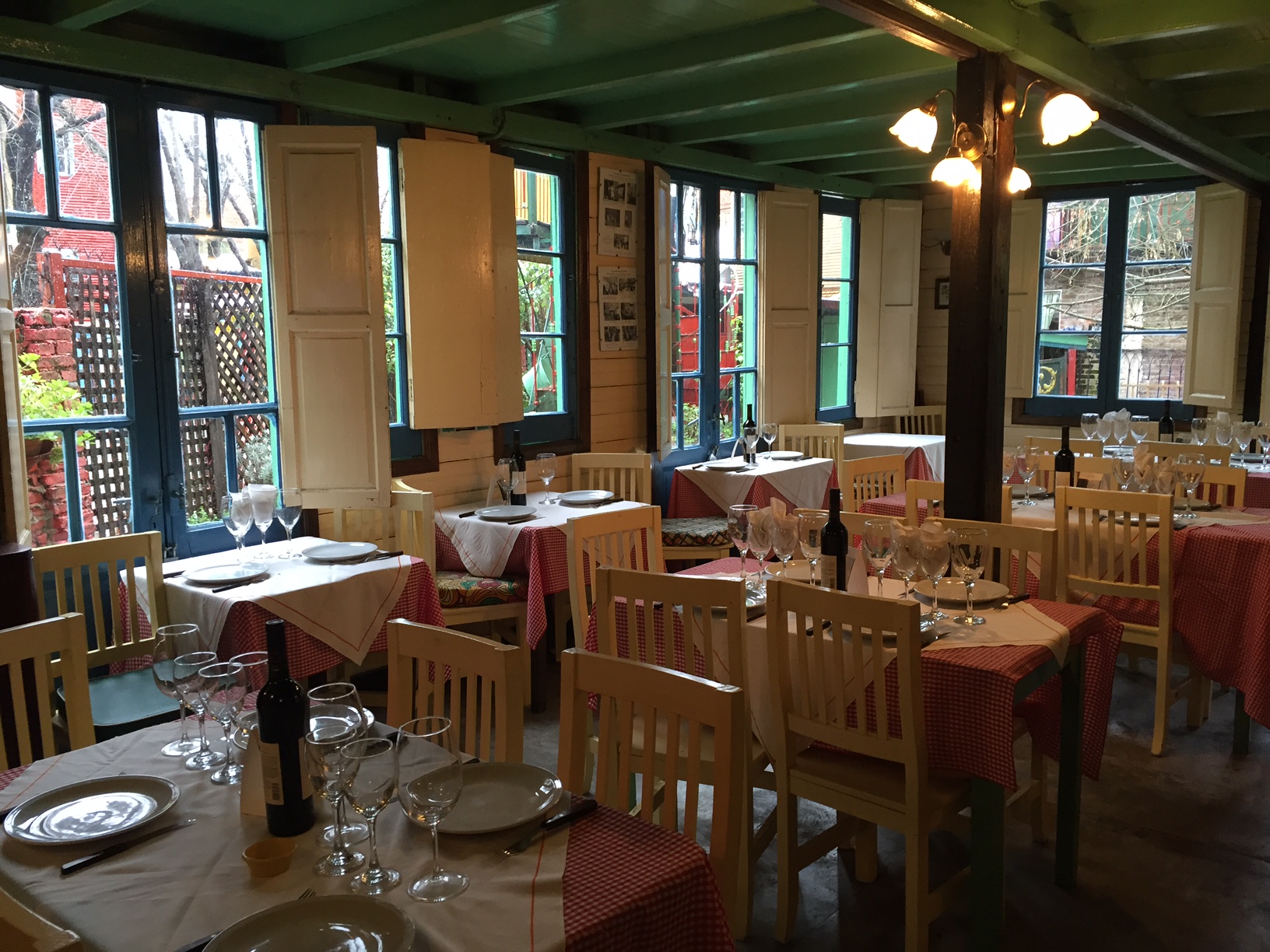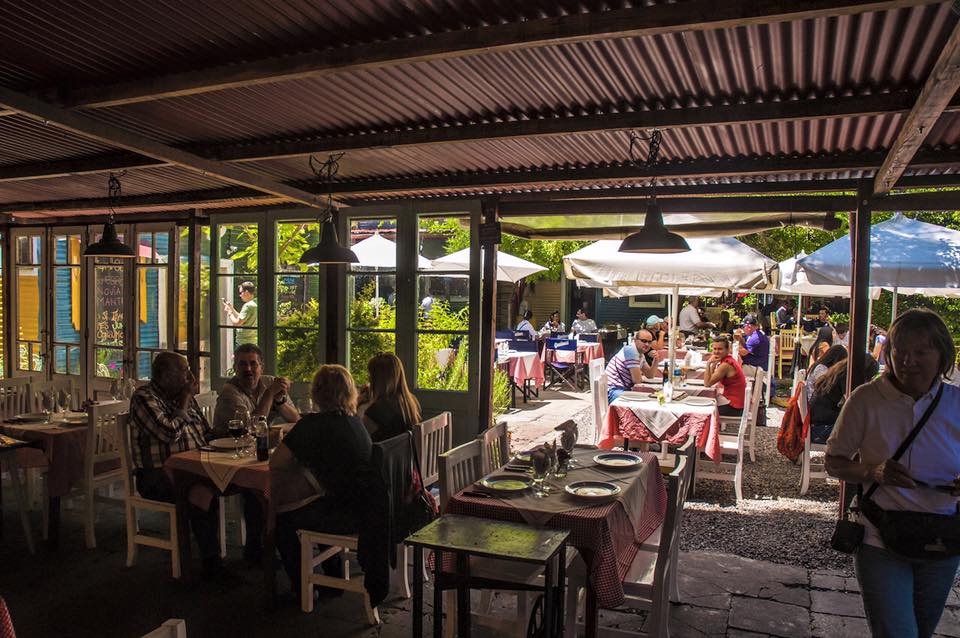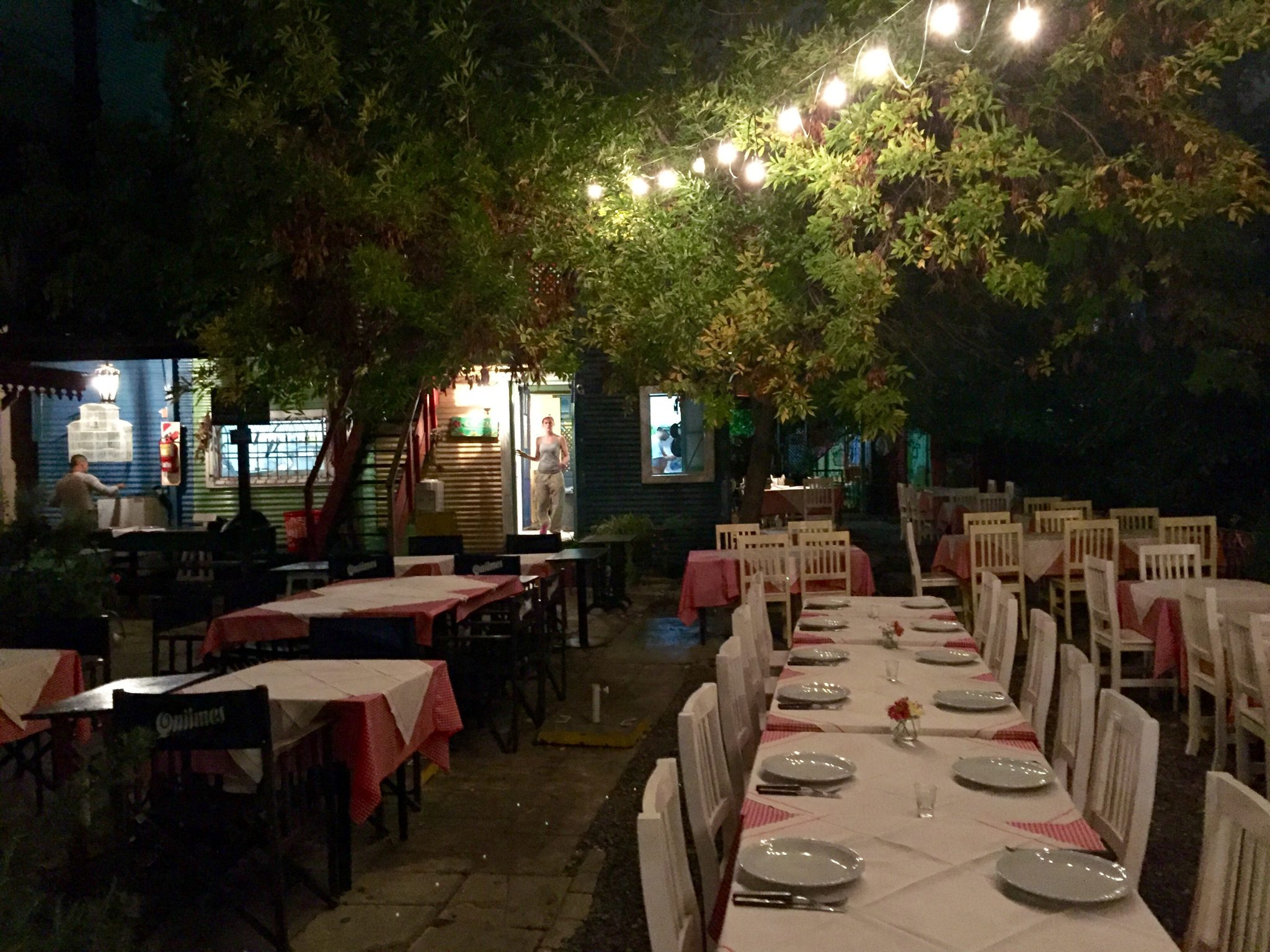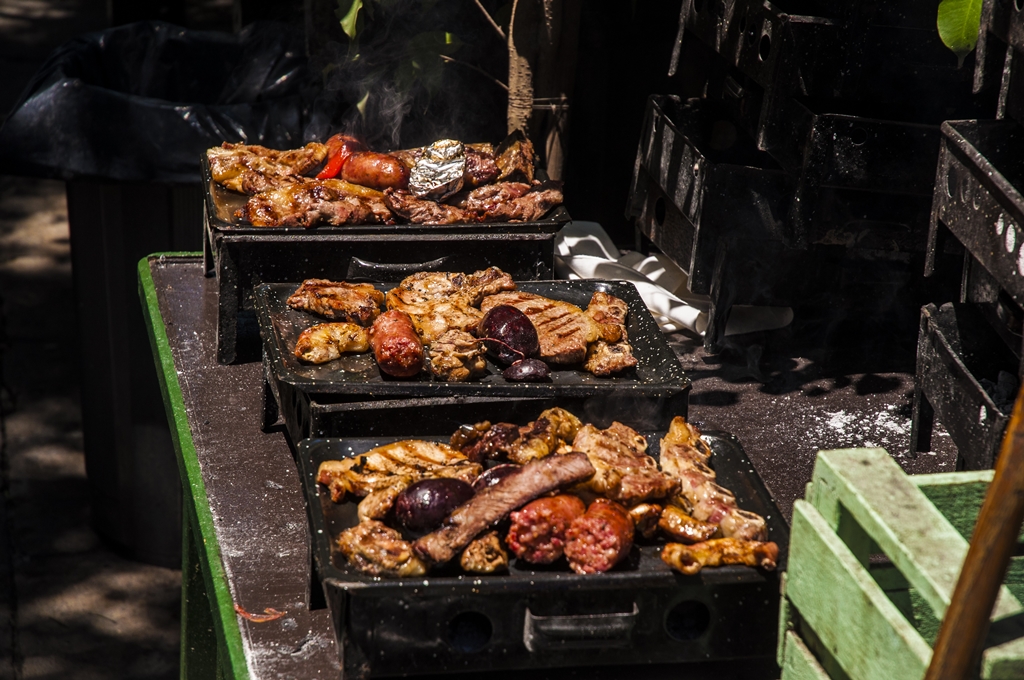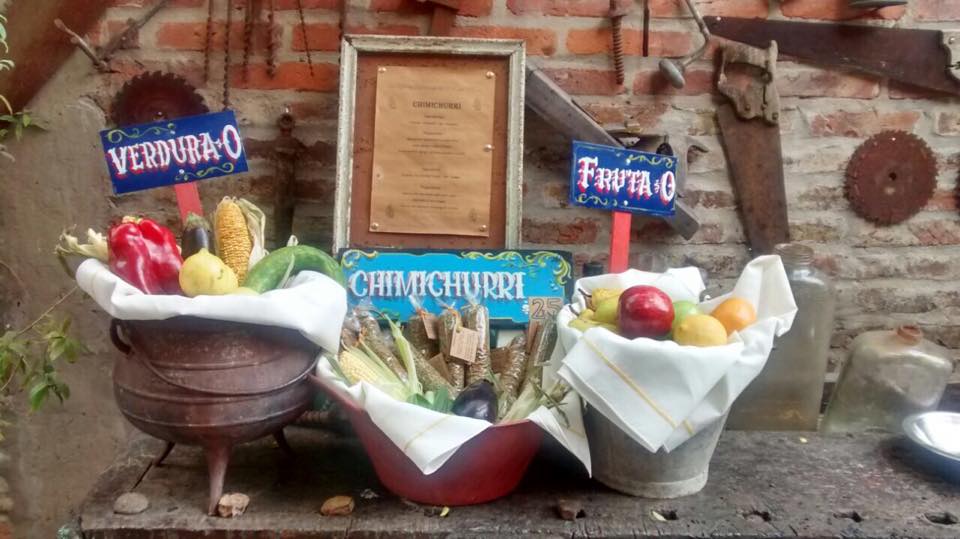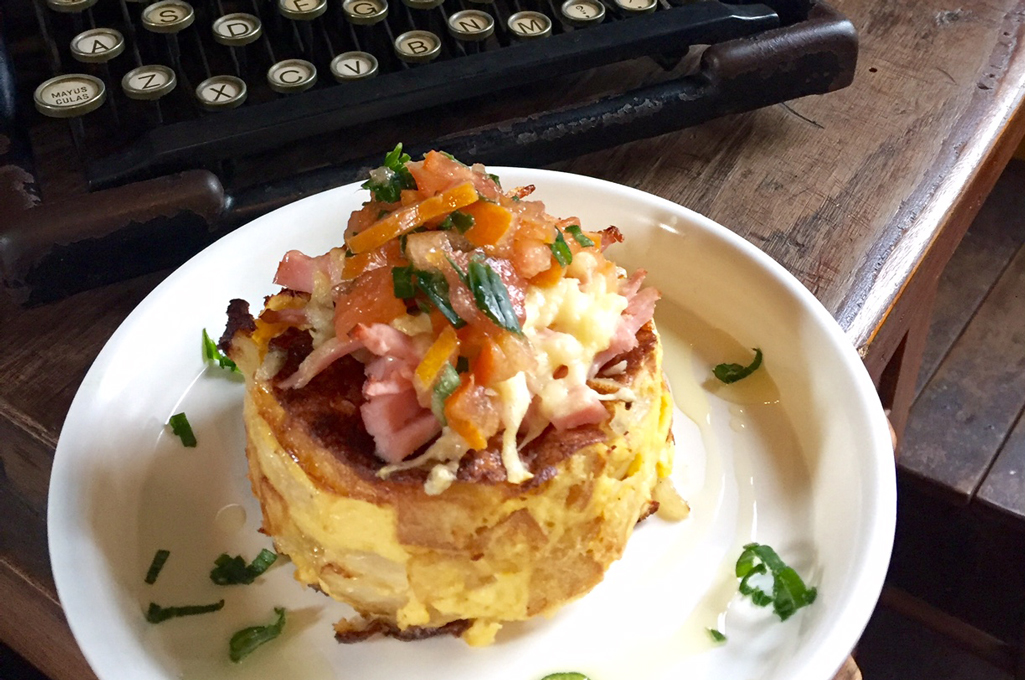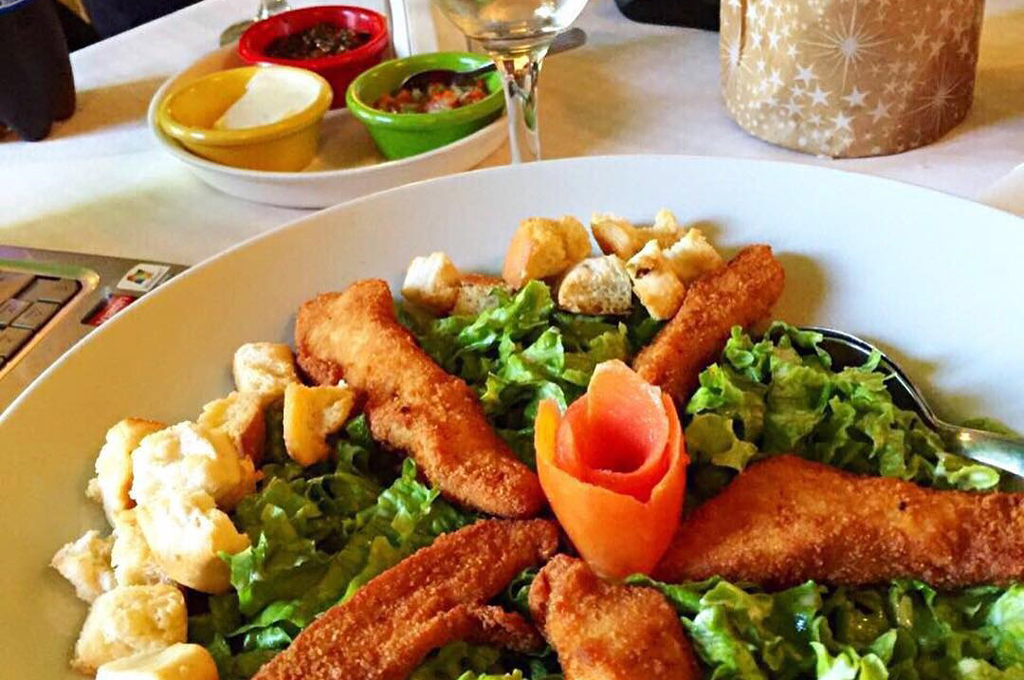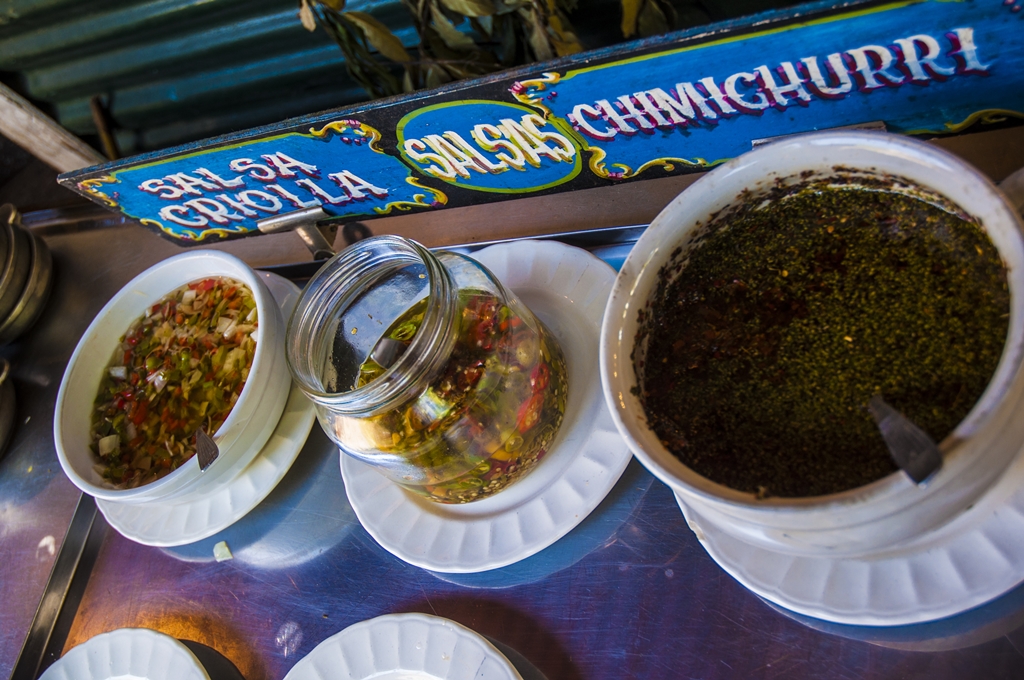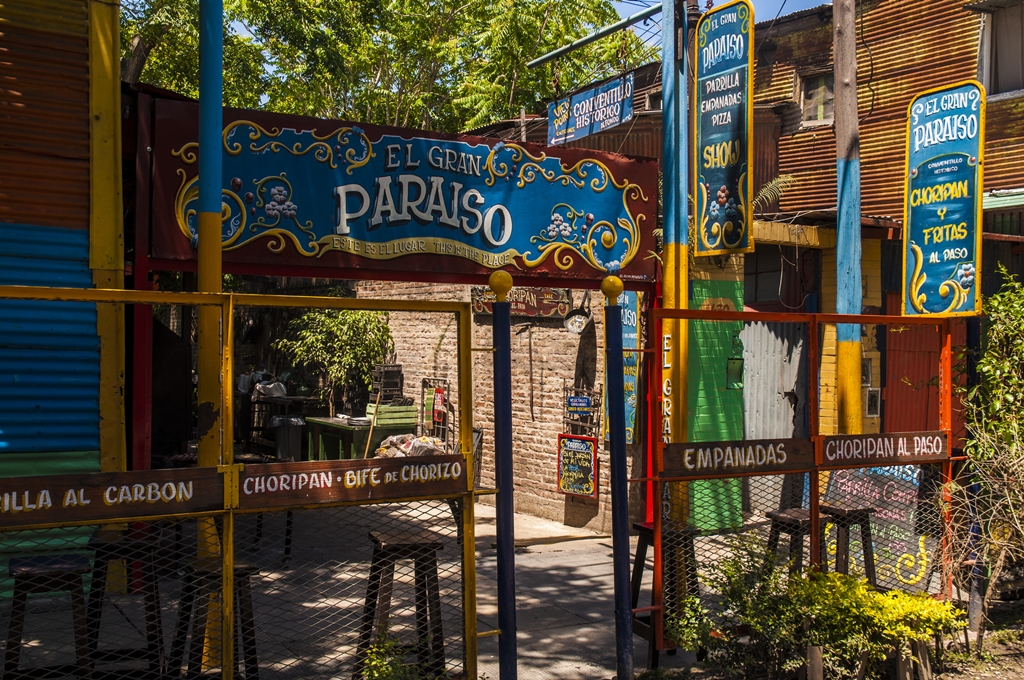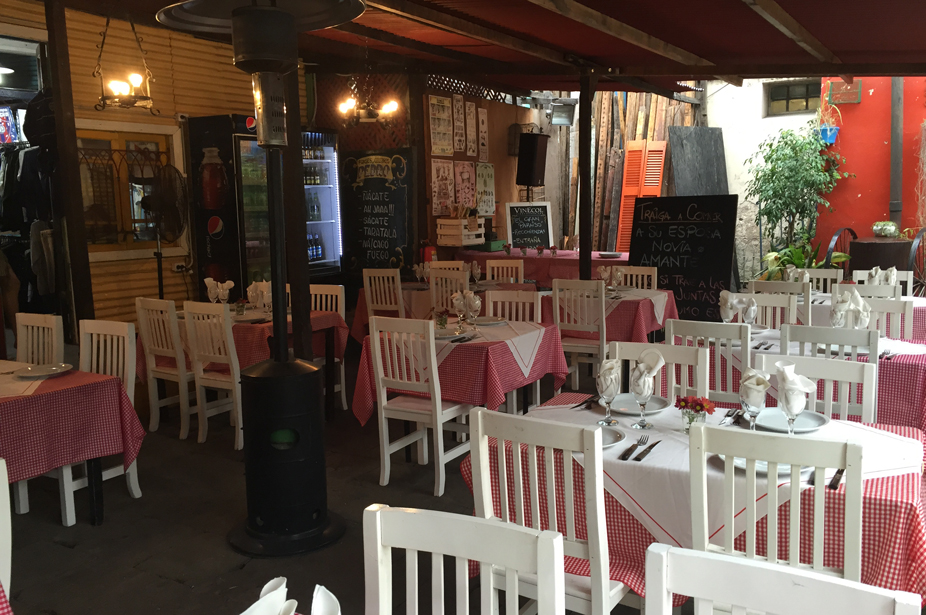Visit
The historic tenement
In the patio of El Gran Paraíso there is a tenement house dating from 1890. It is a construction of sheets and old wood that preserves its original style. You can visit the rooms on the upper floor enjoying a wonderful view of Caminito
A unique experience, having lunch outdoors in a tenement patio or in one of its rooms converted into a dining room, in the La Boca neighborhood, surrounded by plants and trees
It is a retro walk, a trip back in time, it is part of our history.
The patio and the conventillo are on Caminito street and the entrance to the property is in front of the tracks of a freight train that still circulates. A picturesque place, like the entire neighborhood of La Boca, ideal for walking, having lunch and taking photos with the family.
